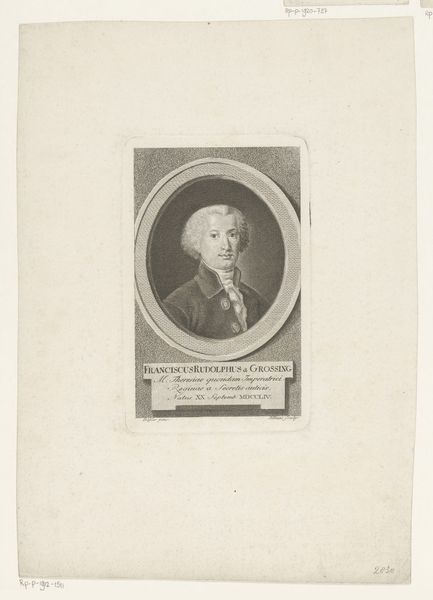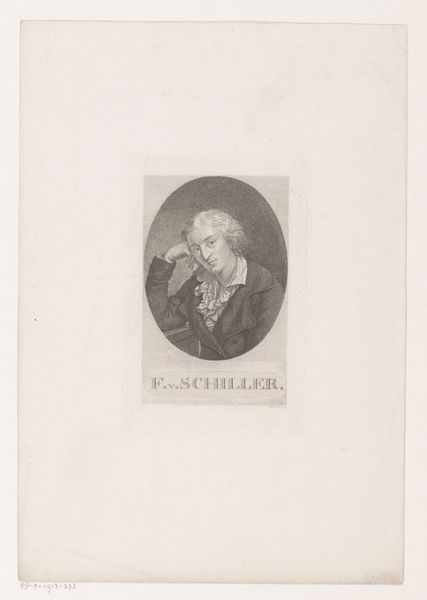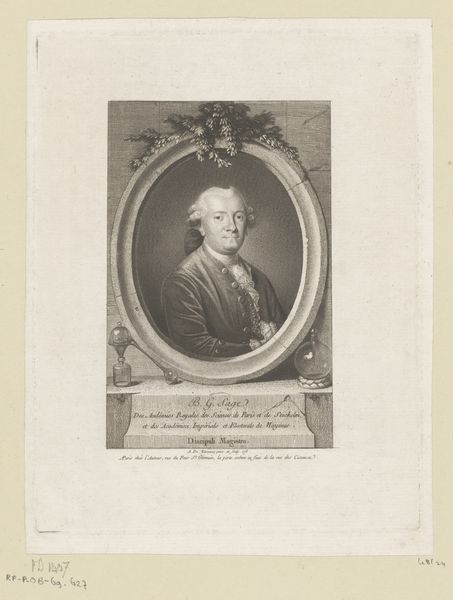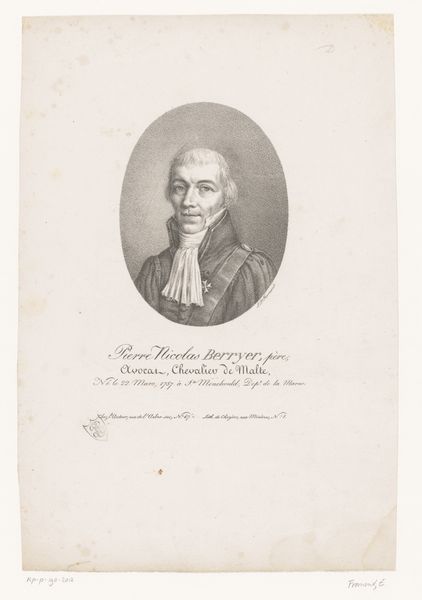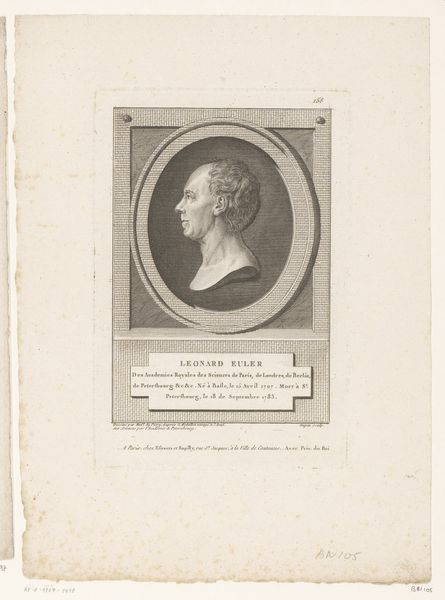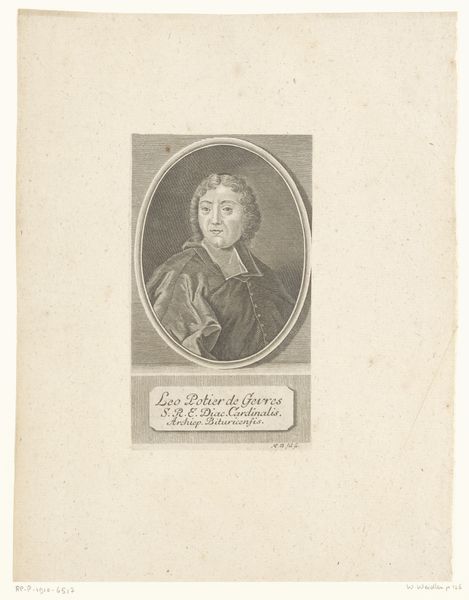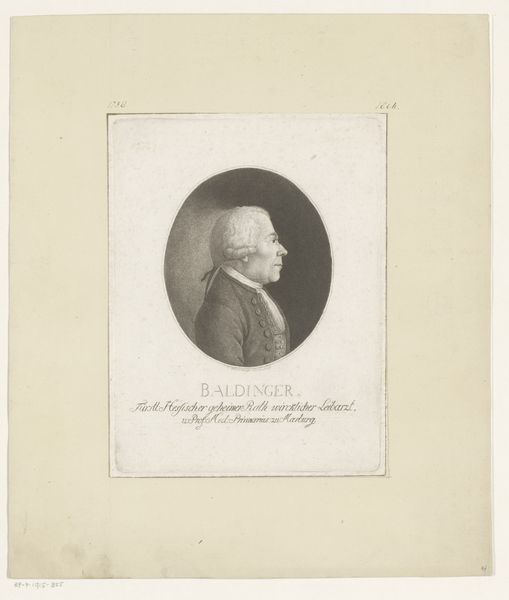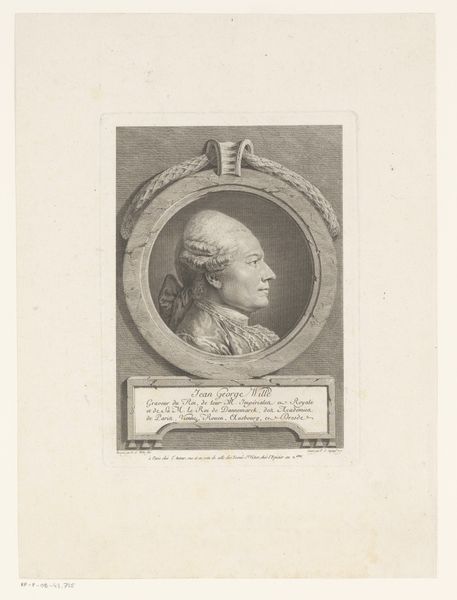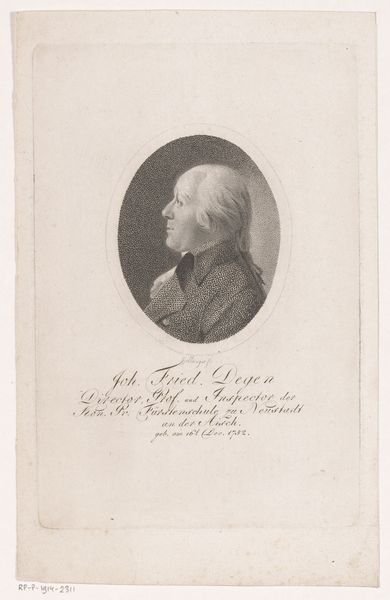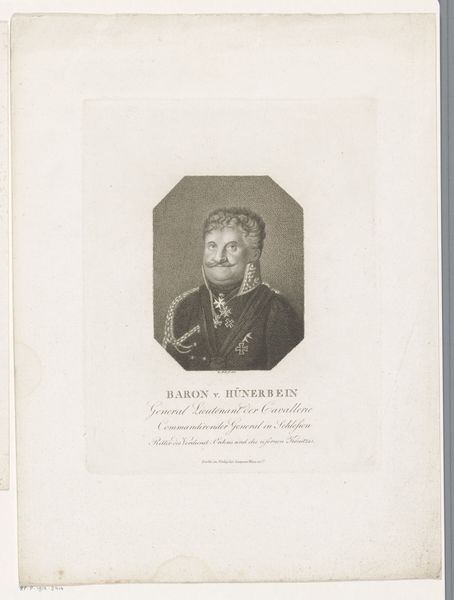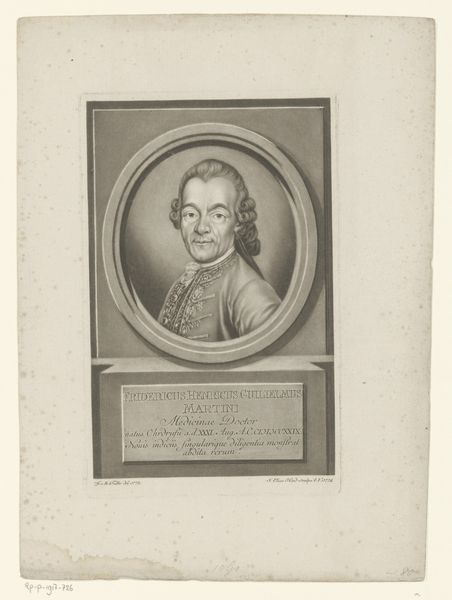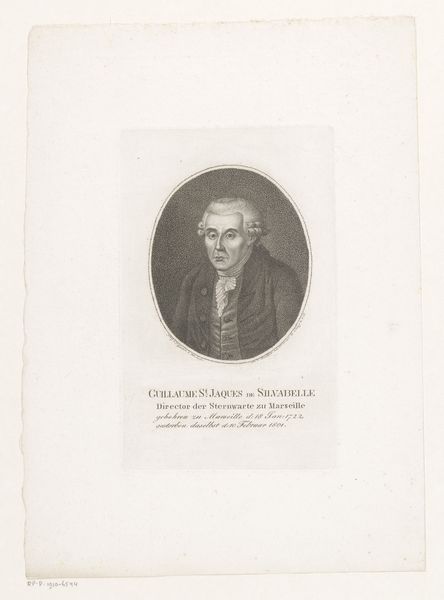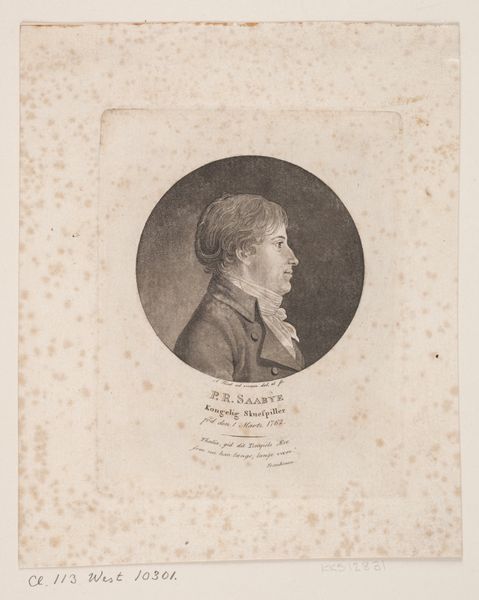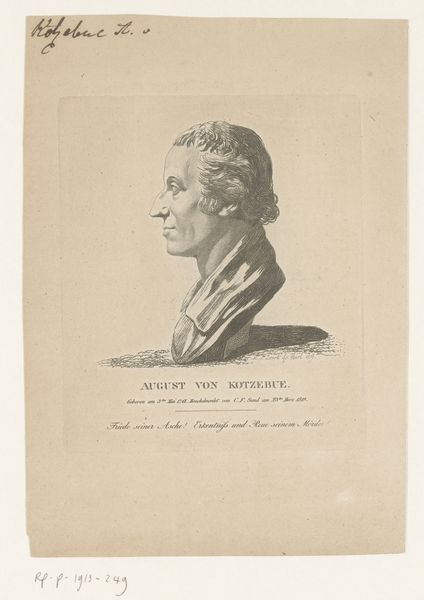
print, paper, engraving
#
portrait
#
neoclacissism
# print
#
paper
#
engraving
Dimensions: height 135 mm, width 88 mm
Copyright: Rijks Museum: Open Domain
Konrad Westermayr created this print of César-François Cassini in the late 18th century. The image is a mezzotint, a printmaking process that relies on building up tone through careful gradations. Mezzotint begins with roughening the entire plate with tiny dots, creating a burr that would print solid black. The printmaker then burnishes or scrapes away the burr to create lighter tones. Looking closely, you can see this technique at work, the way the light emerges from the dark ground of the paper. It’s a labor-intensive process, yet capable of rendering subtle effects of light and shadow. Consider the social implications of this technique. In a pre-photographic era, portrait prints like this one were a primary means of disseminating images. Mezzotint, with its capacity for detail, allowed for a semblance of realism. The print flattens the complexities of labor into a commodity, yet the intense handwork involved in its making reminds us of the value of skilled craftsmanship.
Comments
No comments
Be the first to comment and join the conversation on the ultimate creative platform.
